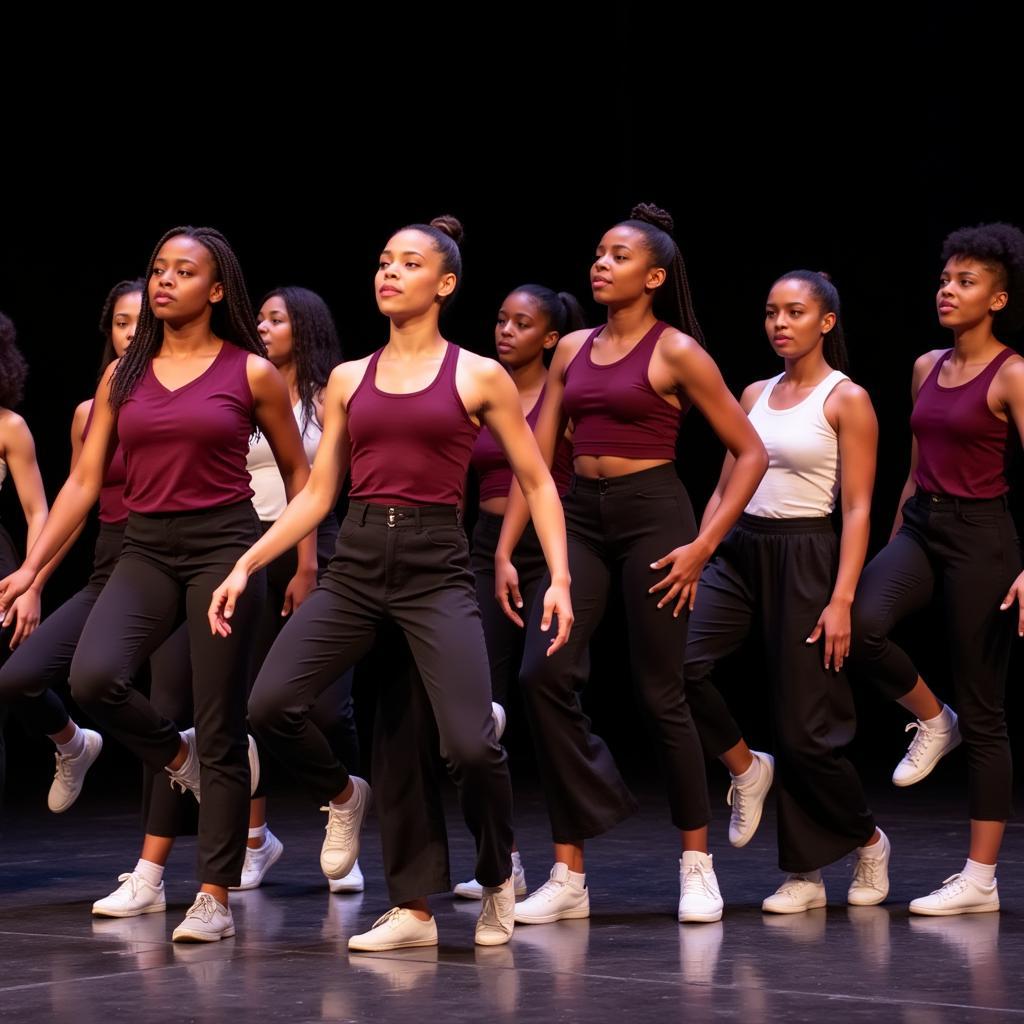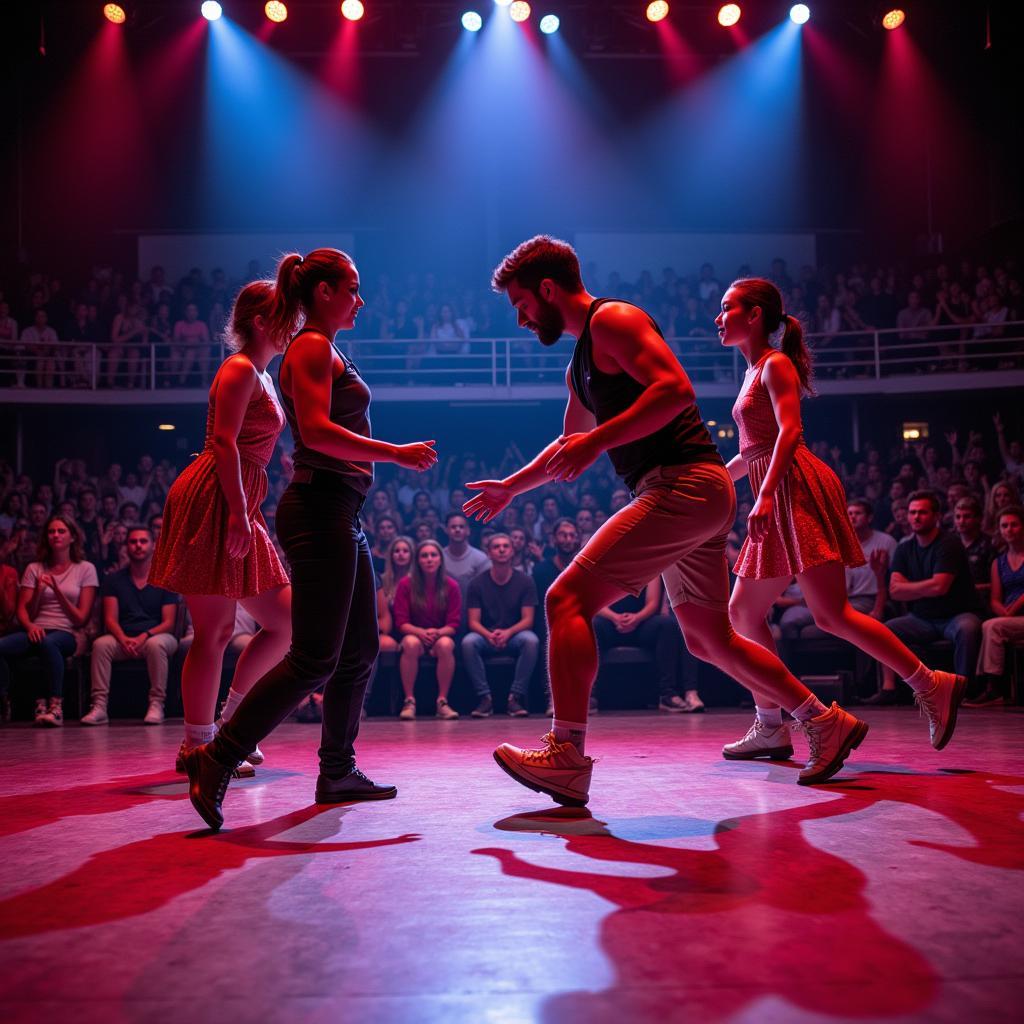Stepping into History: The Enduring Legacy of African American Stepping
African American Stepping, a powerful and rhythmic form of percussive dance, holds a rich history intertwined with community, resilience, and cultural expression. This captivating dance style, utilizing the body as an instrument, goes far beyond entertainment, embodying a legacy passed down through generations.
 African American stepping performance
African American stepping performance
From Humble Beginnings to Global Recognition: Tracing the Roots of Stepping
African American stepping finds its origins in the early 20th century, evolving from various influences within Black communities across the United States. Some trace its roots back to South African gumboot dance traditions, brought over during the Trans-Atlantic slave trade. Others point to the call-and-response patterns found in West African music and dance, evident in the syncopated rhythms and interactive nature of stepping.
“Stepping is a living testament to the power of cultural fusion,” shares Dr. Anika Johnson, a renowned dance historian specializing in African diasporic dance forms. “It’s a beautiful blend of African traditions, adapted and recreated within the context of the African American experience.”
Beyond the Steps: Understanding the Cultural Significance
Stepping is far more than just intricate footwork and synchronized movements. It serves as a powerful vehicle for storytelling, celebrating heritage, and fostering a sense of unity within the African American community.
Stepping as a Rite of Passage
Historically performed by Black fraternities and sororities on college campuses, stepping serves as a rite of passage, instilling discipline, teamwork, and leadership skills. The challenges inherent in mastering complex routines foster a strong sense of camaraderie and shared purpose among members.
A Celebration of Heritage and Identity
Through rhythmic stomps, claps, and vocalizations, stepping performances often weave in elements of African American history, social justice movements, and cultural pride. This fusion of artistic expression and social commentary transforms stepping into a platform for amplifying Black voices and experiences.
 African American sorority stepping performance
African American sorority stepping performance
The Evolution of Stepping: From College Campuses to the Mainstream
While stepping originated in the Black community, its infectious energy and captivating performances have propelled it onto the global stage.
- Movies and Television: Films like “Stomp the Yard” and “Drumline” have brought stepping to mainstream audiences, showcasing its athleticism and artistic merit.
- Competitive Stepping: Stepping competitions, often televised, draw teams from across the country, elevating the dance form to new heights of technical skill and creativity.
- Global Influence: Stepping has inspired similar percussive dance forms in various cultures worldwide, demonstrating its universal appeal and power to connect people through rhythm and movement.
Stepping into the Future: Preserving a Legacy
As African American stepping continues to evolve and inspire, its significance as a powerful expression of cultural identity and community remains steadfast.
“Stepping is a living, breathing tradition,” Dr. Johnson emphasizes. “It’s a testament to the resilience and creativity of the African American community, and its ability to transform struggle into art will continue to resonate for generations to come.”
Want to learn more about African American culture and its vibrant expressions? Explore our articles on African American dance movies and discover the captivating world of Black cinema.
Frequently Asked Questions about African American Stepping
1. What are the key elements of African American stepping?
African American stepping is characterized by its percussive rhythms, intricate footwork, synchronized movements, and use of the body as an instrument. Call-and-response patterns, often incorporating singing and chanting, are also common elements.
2. What is the historical context of stepping?
African American stepping emerged in the early 20th century, drawing influences from African dance traditions and evolving within Black communities, particularly on college campuses among fraternities and sororities.
3. Is stepping only performed by African Americans?
While deeply rooted in African American culture, stepping has gained widespread popularity and is now performed by people of diverse backgrounds who appreciate its artistry and energy.
4. Are there different styles of stepping?
Yes, various styles of stepping have developed over time, each with its own unique flavor and regional influences. Some popular styles include the “Gogo,” “The Stroll,” and “The Atlanta Style.”
5. Where can I learn more about African American stepping?
Numerous resources are available, including documentaries, books, and online platforms dedicated to showcasing the history and evolution of stepping. You can also find stepping classes and workshops in many cities worldwide.
 African American stepping competition
African American stepping competition
Interested in exploring other facets of African American culture? Check out our articles on African American motivational speakers and discover inspiring voices from the Black community.
For further assistance or information, don’t hesitate to contact us at +255768904061, email us at [email protected], or visit our office at Mbarali DC Mawindi, Kangaga, Tanzania. Our dedicated customer support team is available 24/7 to assist you.


